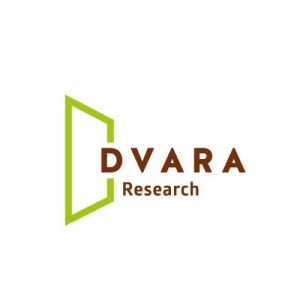Sometimes adversity is the perfect catalyst to invent what was unforeseeable in normal circumstances. The post-election violence in Kenya at the beginning of 2008 prompted a bunch of programmers to create an open-source platform that would collect eyewitness reports of violence sent in by email and text-message and map that information onto a Google Map for everyone to see. What would have otherwise gone unnoticed to the world at large became a visual testimony to the violence.
The platform, Ushahidi – which means “testimony” in Swahili – since then has been deployed for a number of crisis and disaster situations to provide critical and life-saving data during emergencies especially when mobilizing relief and rescue operations as in the case of Haiti or the most recent Christchurch earthquake in New Zealand.
Video: What is the Ushahidi Platform?
As with other areas, being open-source, the potential for its application in the context of rural development and financial inclusion are manifold. For example an organization serving a remote rural population can deploy it to collect and map customer feedback about its product or services on a geographic basis, and effect corrective actions based on the different clusters on the map. Government schemes could be mapped and individuals in villages could be encouraged to report any leakages; a surge of dots over a particular village can guide authorities in pinpointing localities that require attention. In the context of MFIs, those dots could come to visually represent repayments by borrowers or perhaps in the current environment as a feedback against alleged harassment by recovery agents.
While the platform per se is crucial and the ways in which it could be deployed are left to one’s imagination, technology however is just 10 percent of the solution, with the other 90 percent being educating people about the deployment and getting them to submit content.
In a short Q&A with Patrick Meier, Director of Crisis Mapping & New Media, Ushahidi, we discuss the platform and its applications.
From its beginning in early 2008, how has Ushahidi evolved, and with it the whole crowdsourcing phenomenon?
The Ushahidi platform has become easier to use (see Crowdmap.com) [Crowdmap is the easy-to-install, hosted version of Ushahidi – think of it as the equivalent of WordPress.com blogs for WordPress] with more features and functionalities. We have also moved to a plugin architecture, which means that third parties can develop their own apps. This makes the platform a lot more extensible and versatile. The application of crowdscourcing to crisis environments was in large part spearheaded by the Ushahidi platform.
The wisdom of the crowd is what an Ushahidi deployment feeds on. What are the inherent challenges in this and how could they be addressed?
I’m not sure it’s as much the wisdom as the presence of the crowd. The crowd will always outnumber the expert journalist, the expert election monitor, the expert disaster responder. There are tradeoffs, more information, but one of the main challenges is validity of that information. But the more information you do get, the greater the probability that you can triangulate said information, ie, the great the chance that more than one person will report about the same event. That’s why we’ve developed Swift River, to help triangulate and verify crowdsourced information. The Ushahidi platform also allows for multi-media reporting, which allows the crowd to share pictures and video footage of an unfolding situation.
Crisis mapping is what predominantly Ushahidi is associated with – Whether it be for Haiti, Snowmaggaden, Australian Floods, Sudan or the recent Egyptian protests. I am sure there are more areas in which the platform could be deployed than just for crisis situations?
That’s correct, the majority of Ushahidi platform applications are not crisis related. The platform is simply a free and open source tool that facilitates collaborate live mapping. The Ushahidi platform has been used for citizen journalism, local governance, environmental monitoring, ICT4D, etc.
Are there instances where it has been used successfully to track progress of rural projects or to track down the lack of basic services on a geographic basis?
Yes, the Kiirti project in Bangalore.
In the Indian context, where a majority of the population lives in rural India, how can Ushahidi be used for rural development?
We’ve developed an audio mapping component that allows illiterate populations to share what they’re reporting via voice. They can leave short voicemail reports that can then be mapped or transcribed.
How can companies or NGOs operating on the field, especially in remote rural areas, benefit from it and information filtering tools like Swiftriver?
Filtering tools like SwiftRiver are more useful for events that have a lot of main/social media coverage. For remote rural areas, the audio mapping component may make the most sense. Also, one can use FrontlineSMS for offline SMS mapping, ie, you can do on site mapping and then upload the data to the Ushahidi platform.
You have your Crowdmap Check-In service slated for launch at SXSW 2011 which gives individuals and organizations the ability to create their own “Foursquares” or “Gowallas” if you like. What are your expectations from it?
We expect that CI will further lower the barrier to mapping and we thus expect more live maps to be created as well.
Where do you see the project in 2-3 years time? And in general the areas that need to be worked upon when it comes to crowdsourcing information from the field?
It’s hard to say where the project will be in just 1 year because things are moving so fast. I think the area that needs most work on is SwiftRiver, ie, improving our tools to curate and validate crowdsourced information in real time.
About Partick Meier: He is the co-founder of the International Network of Crisis Mappers and previously co-directed Harvard University’s (HHI) Program on Crisis Mapping and Early Warning. He has an MA in International Affairs from Columbia University and is currently pursuing his PhD at the Flectcher School of Law and Diplomacy.


